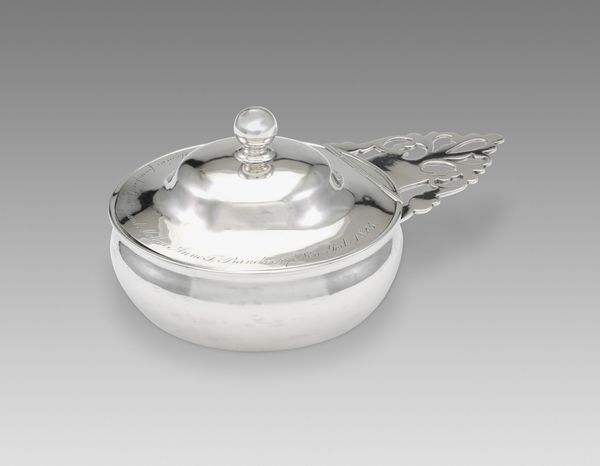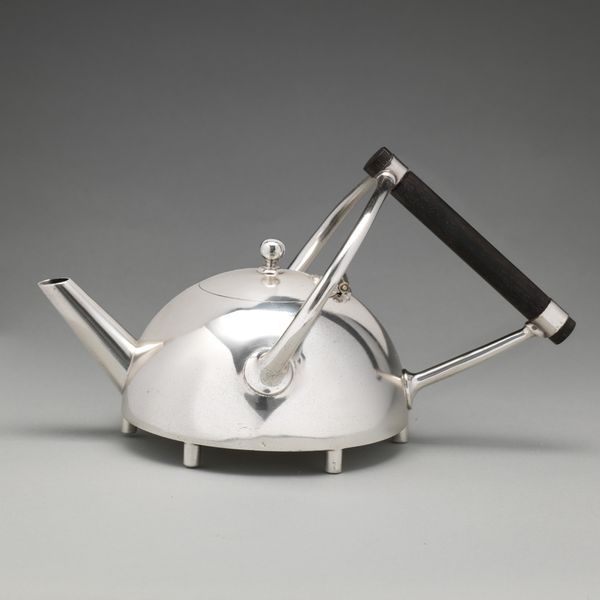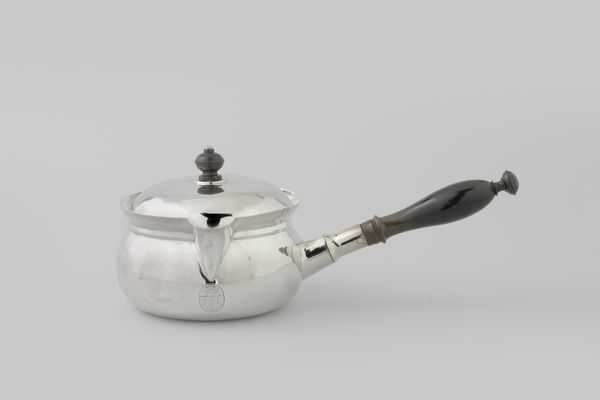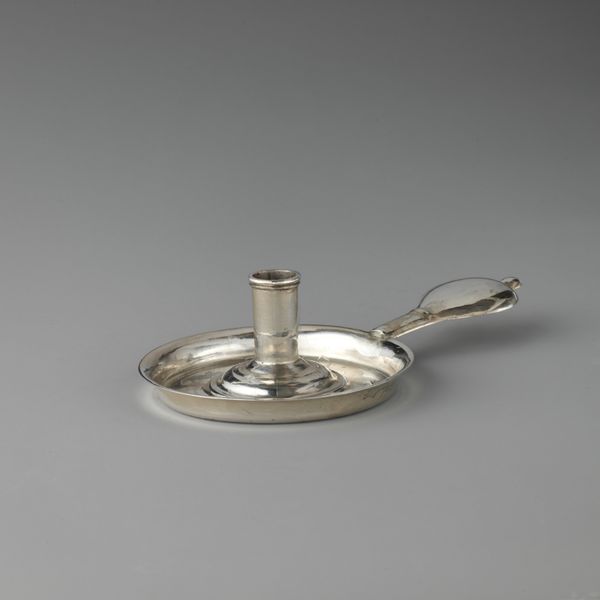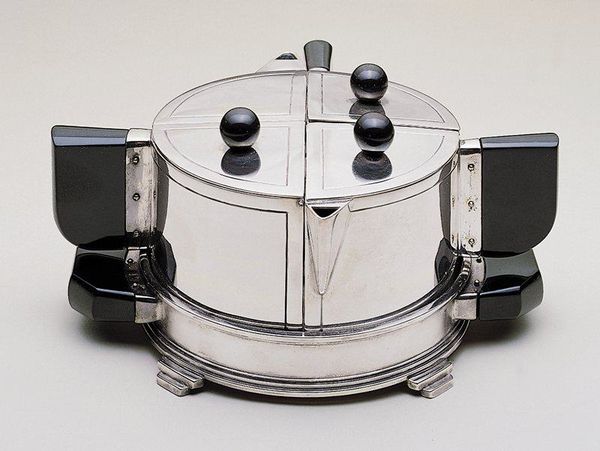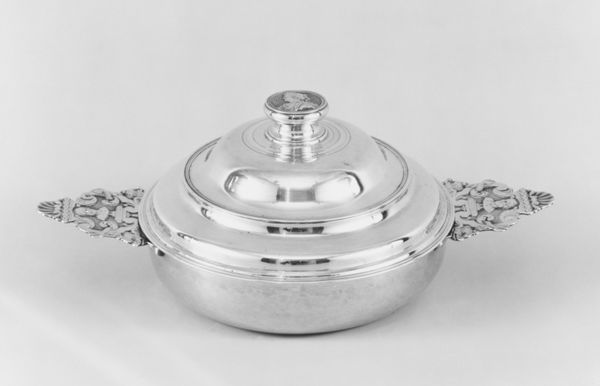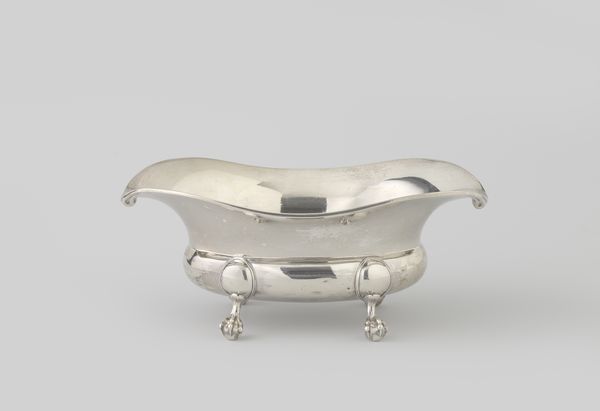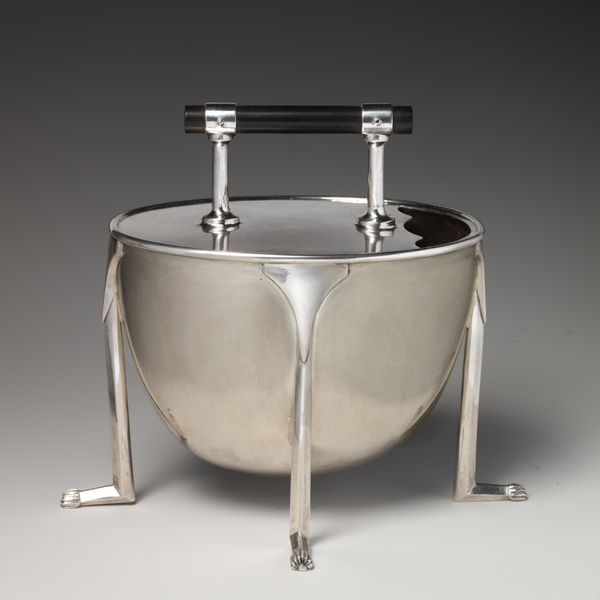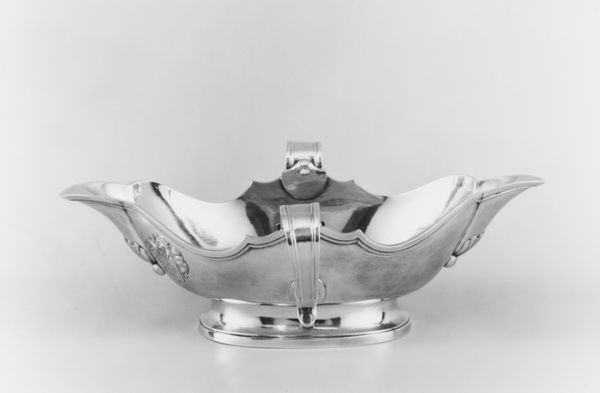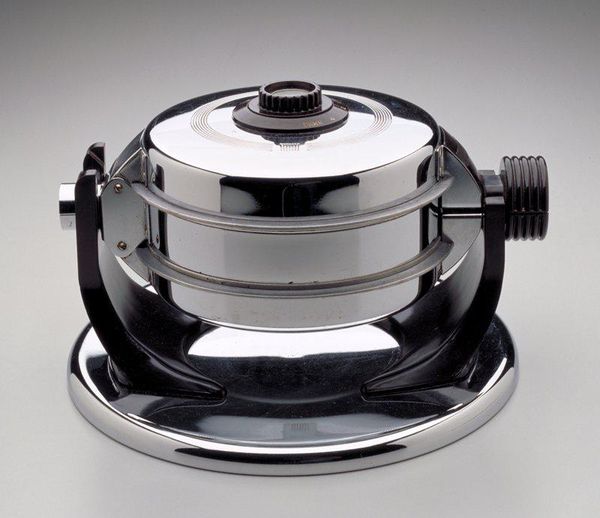
silver
#
silver
#
arts-&-crafts-movement
#
decorative-art
Dimensions: H. 34.6 cm (13 5/8 in.)
Copyright: Public Domain
Art Historian: Here we have a Ladle, conceived around 1880 by Christopher Dresser. Its current home is at The Art Institute of Chicago. Curator: It’s… sleek. All silver, or at least a highly reflective surface, almost painfully modern. I’m drawn to its geometry, the contrasting curves of the bowl against those severe, straight legs. Art Historian: Indeed. This object emerges from the Arts and Crafts Movement, yet departs from its emphasis on handcrafted irregularity. Instead, we see industrial techniques embraced. What symbols or ideas come to mind for you when you consider its potential user and original setting? Curator: Well, purely in terms of form, the spherical bowl form is echoed in the domed lid. Notice also the material. The reflective surface speaks to luxury, a refined setting where this would be used to serve food with… elegance. The ebony handles present visual punctuation in a sea of reflective metal. Art Historian: Agreed. The highly polished silver does suggest refinement. The sphere, psychologically, often suggests completeness and perfection. It’s interesting how the form is used in domestic ware – perhaps indicating aspiration towards such qualities within the home? Also consider its potential as a symbolic object. It suggests ideas of abundance and even alchemical transformation associated with the ritual of dining. Curator: An interesting interpretation! I’m still focused on that streamlined form though. I feel like Dresser almost predicted the Art Deco aesthetic of the 1920s, despite working much earlier. His awareness of pure shape really sets this apart from some of the more overtly ornate work of the Arts and Crafts era. Art Historian: Perhaps that embrace of machine production – as opposed to shunning it completely – allowed him to anticipate what was to come. One might even say the stark contrast here speaks of that ever present tension between human hand and machine precision in the narrative of culture and art. Curator: Very insightful. Ultimately, for me, it is about those sleek surfaces and stark forms. Art Historian: And for me, it becomes a subtle lens to observe the human condition reflected in designed environments.
Comments
No comments
Be the first to comment and join the conversation on the ultimate creative platform.
